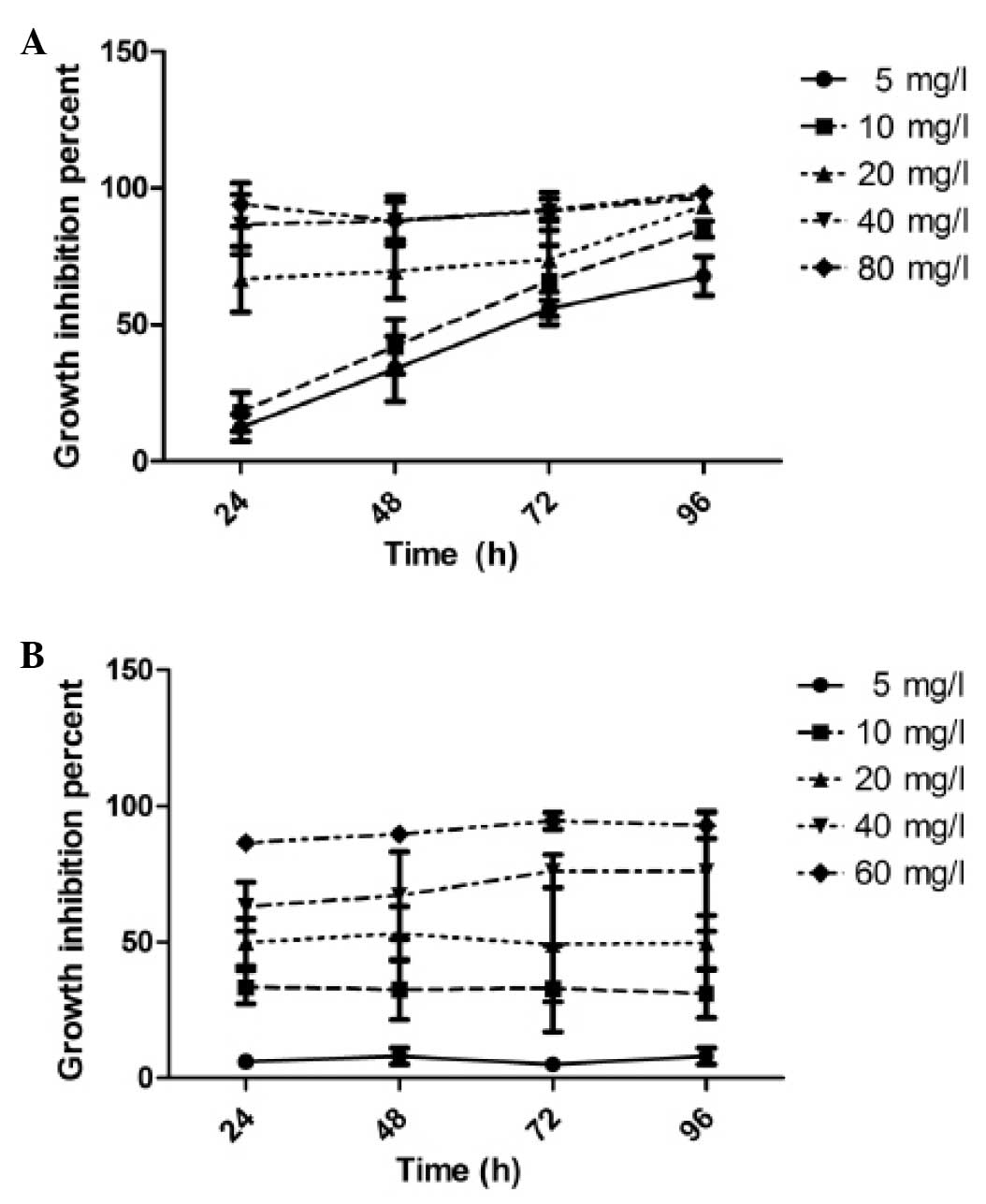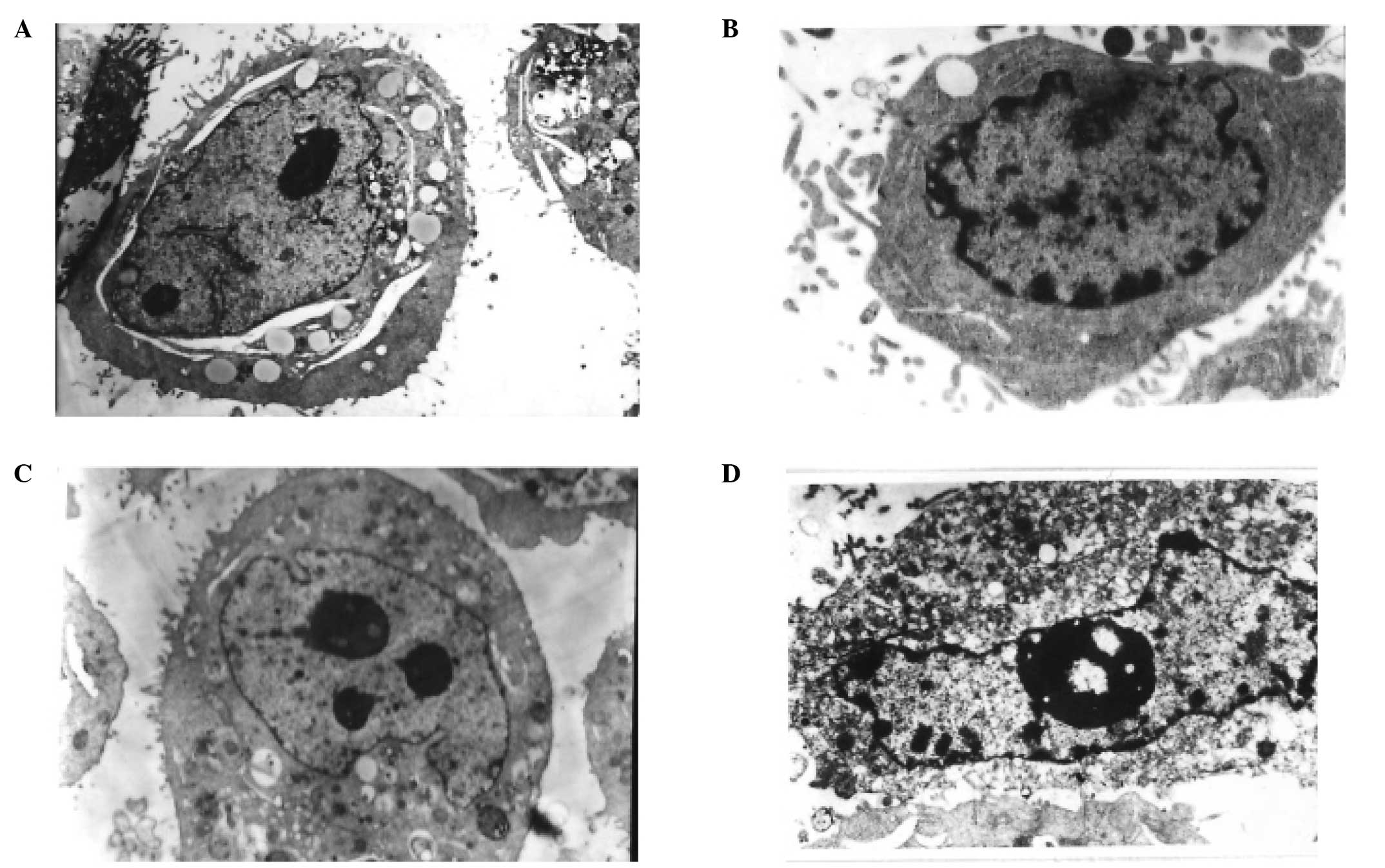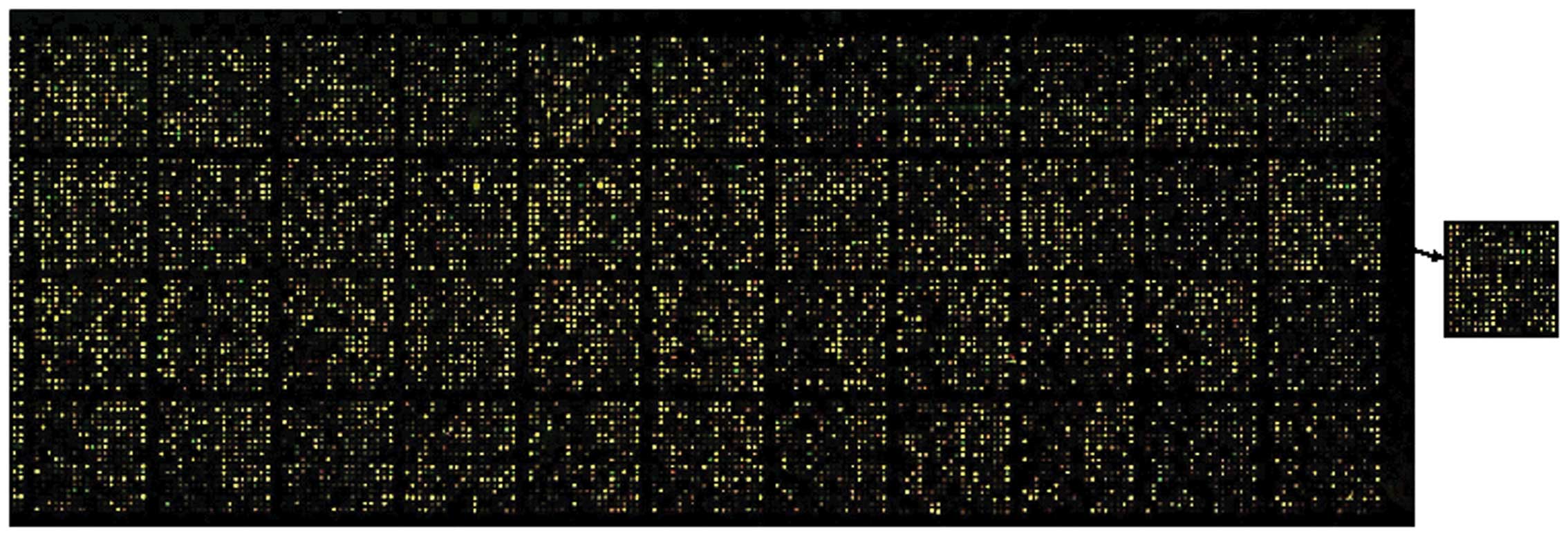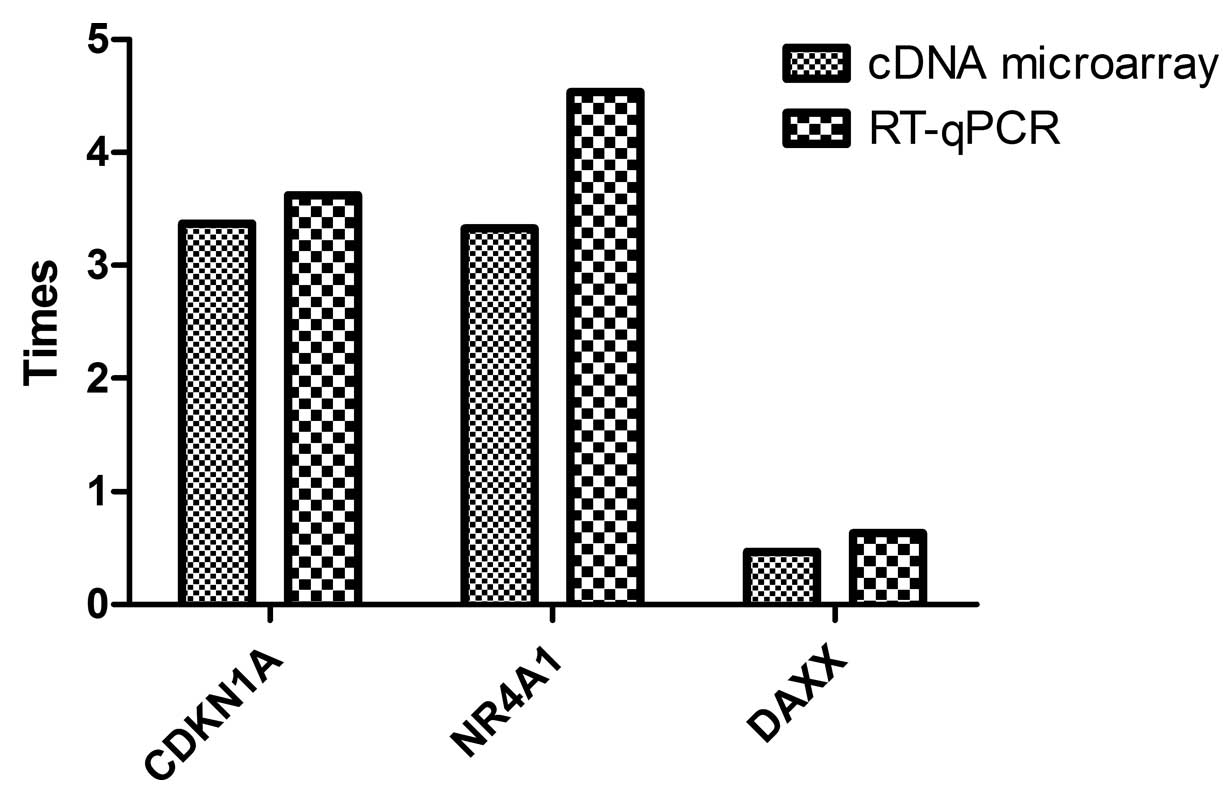|
1
|
Jemal A, Bray F, Center MM, Ferlay J, Ward
E and Forman D: Global cancer statistics. CA Cancer J Clin.
61:69–90. 2011. View Article : Google Scholar : PubMed/NCBI
|
|
2
|
Wang J, Huang Y, Guan Z, Zhang JL, Su HK,
Zhang W, Yue CF, Yan M, Guan S and Liu QQ: E3-ligase Skp2 predicts
poor prognosis and maintains cancer stem cell pool in
nasopharyngeal carcinoma. Oncotarget. 5:5591–5601. 2014.PubMed/NCBI
|
|
3
|
Lin JC, Jan JS, Hsu CY, Liang WM, Jiang RS
and Wang WY: Phase III study of concurrent chemoradiotherapy versus
radiotherapy alone for advanced nasopharyngeal carcinoma: Positive
effect on overall and progression-free survival. J Clin Oncol.
21:631–637. 2003. View Article : Google Scholar : PubMed/NCBI
|
|
4
|
Chang YH, Wu CC, Chang KP, Yu JS, Chang YC
and Liao PC: Cell secretome analysis using hollow fiber culture
system leads to the discovery of CLIC1 protein as a novel plasma
marker for nasopharyngeal carcinoma. J Proteome Res. 8:5465–5474.
2009. View Article : Google Scholar : PubMed/NCBI
|
|
5
|
Lee AW, Poon YF, Foo W, Law SC, Cheung FK,
Chan DK, Tung SY, Thaw M and Ho JH: Retrospective analysis of 5037
patients with nasopharyngeal carcinoma treated during 1976–1985:
Overall survival and patterns of failure. Int J Radiat Oncol Biol
Phys. 23:261–270. 1992. View Article : Google Scholar
|
|
6
|
Lin HX, Hua YJ, Chen QY, Luo DH, Sun R,
Qiu F, Mo HY, Mai HQ, Guo X, Xian LJ, et al: Randomized study of
sinusoidal chronomodulated versus flat intermittent induction
chemotherapy with cisplatin and 5-fluorouracil followed by
traditional radiotherapy for locoregionally advanced nasopharyngeal
carcinoma. Chin J Cancer. 32:502–511. 2013. View Article : Google Scholar : PubMed/NCBI
|
|
7
|
Lo LC, Chen CY, Chen ST, Chen HC, Lee TC
and Chang CS: Therapeutic efficacy of traditional Chinese medicine,
Shen-Mai San, in cancer patients undergoing chemotherapy or
radiotherapy: Study protocol for a randomized, double-blind,
placebo-controlled trial. Trials. 13:2322012. View Article : Google Scholar : PubMed/NCBI
|
|
8
|
Li X, Chen T, Lin S, Zhao J, Chen P, Ba Q,
Guo H, Liu Y, Li J, Chu R, et al: Valeriana jatamansi constituent
IVHD-valtrate as a novel therapeutic agent to human ovarian cancer:
In vitro and in vivo activities and mechanisms. Curr Cancer Drug
Targets. 13:472–483. 2013. View Article : Google Scholar : PubMed/NCBI
|
|
9
|
Hou X, Yuan X, Zhang B, Wang S and Chen Q:
Screening active anti-breast cancer compounds from Cortex Magnolia
officinalis by 2D LC-MS. J Sep Sci. 36:706–712. 2013. View Article : Google Scholar : PubMed/NCBI
|
|
10
|
Su CC: Tanshinone IIA potentiates the
efficacy of 5-FU in Colo205 colon cancer cells in vivo through
downregulation of P-gp and LC3-II. Exp Ther Med. 3:555–559.
2012.PubMed/NCBI
|
|
11
|
Lv JJ, Xu M, Wang D, Zhu HT, Yang CR, Wang
YF, Li Y and Zhang YJ: Cytotoxic bisbenzylisoquinoline alkaloids
from Stephania epigaea. J Nat Prod. 76:926–932. 2013. View Article : Google Scholar : PubMed/NCBI
|
|
12
|
Kudo K, Hagiwara S, Hasegawa A, Kusaka J,
Koga H and Noguchi T: Cepharanthine exerts anti-inflammatory
effects via NF-κB inhibition in a LPS-induced rat model of systemic
inflammation. J Surg Res. 171:199–204. 2011. View Article : Google Scholar
|
|
13
|
Goto M, Zeller WP and Hurley RM:
Cepharanthine (biscoclaurine alkaloid) treatment in endotoxic shock
of suckling rats. J Pharm Pharmacol. 43:589–591. 1991. View Article : Google Scholar : PubMed/NCBI
|
|
14
|
Furusawa S and Wu J: The effects of
biscoclaurine alkaloid cepharanthine on mammalian cells:
Implications for cancer, shock, and inflammatory diseases. Life
Sci. 80:1073–1079. 2007. View Article : Google Scholar : PubMed/NCBI
|
|
15
|
Kono K, Takahashi JA, Ueba T, Mori H,
Hashimoto N and Fukumoto M: Effects of combination chemotherapy
with biscoclaurine-derived alkaloid (Cepharanthine) and nimustine
hydrochloride on malignant glioma cell lines. J Neurooncol.
56:101–108. 2002. View Article : Google Scholar : PubMed/NCBI
|
|
16
|
Takahashi-Makise N, Suzu S, Hiyoshi M,
Ohsugi T, Katano H, Umezawa K and Okada S: Biscoclaurine alkaloid
cepharanthine inhibits the growth of primary effusion lymphoma in
vitro and in vivo and induces apoptosis via suppression of the
NF-kappaB pathway. Int J Cancer. 125:1464–1472. 2009. View Article : Google Scholar : PubMed/NCBI
|
|
17
|
Harada T, Harada K and Ueyama Y: The
enhancement of tumor radioresponse by combined treatment with
cepharanthine is accompanied by the inhibition of DNA damage repair
and the induction of apoptosis in oral squamous cell carcinoma. Int
J Oncol. 41:565–572. 2012.PubMed/NCBI
|
|
18
|
Tamatani T, Azuma M, Motegi K, Takamaru N,
Kawashima Y and Bando T: Cepharanthin-enhanced radiosensitivity
through the inhibition of radiation-induced nuclear factor-κB
activity in human oral squamous cell carcinoma cells. Int J Oncol.
31:761–768. 2007.PubMed/NCBI
|
|
19
|
Zahedi P, De Souza R, Huynh L,
Piquette-Miller M and Allen C: Combination drug delivery strategy
for the treatment of multidrug resistant ovarian cancer. Mol Pharm.
8:260–269. 2011. View Article : Google Scholar
|
|
20
|
Li H, Yan Z, Ning W, Xiao-Juan G, Cai-Hong
Z, Jin-Hua J, Fang M and Qing-Duan W: Using Rhodamine 123
accumulation in CD8+ cells as a surrogate indicator to
study the P-glycoprotein modulating effect of cepharanthine
hydrochloride in vivo. J Biomed Biotechnol. 2011:2816512011.
|
|
21
|
Peng YM, Wang N, Wang YF, Han L, Zhang Y,
Jiang JH, Zhou YB and Wang QD: Correlation between reversing effect
of cepharanthine hydrochloride on multidrug resistance and
P-glycoprotein expression and function of K562/ADR cells. Yao Xue
Xue Bao. 47:594–599. 2012.In Chinese. PubMed/NCBI
|
|
22
|
Abbas T and Dutta A: p21 in cancer:
Intricate networks and multiple activities. Nat Rev Cancer.
9:400–414. 2009. View
Article : Google Scholar : PubMed/NCBI
|
|
23
|
Liu G and Lozano G: p21 stability: Linking
chaperones to a cell cycle checkpoint. Cancer Cell. 7:113–114.
2005. View Article : Google Scholar : PubMed/NCBI
|
|
24
|
Geng H, Rademacher BL, Pittsenbarger J,
Huang CY, Harvey CT, Lafortune MC, Myrthue A, Garzotto M, Nelson
PS, Beer TM, et al: ID1 enhances docetaxel cytotoxicity in prostate
cancer cells through inhibition of p21. Cancer Res. 70:3239–3248.
2010. View Article : Google Scholar : PubMed/NCBI
|
|
25
|
Prabhu S, Ignatova A, Park ST and Sun XH:
Regulation of the expression of cyclin-dependent kinase inhibitor
p21 by E2A and Id proteins. Mol Cell Biol. 17:5888–5896.
1997.PubMed/NCBI
|
|
26
|
Okano S, Lan L, Tomkinson AE and Yasui A:
Translocation of XRCC1 and DNA ligase IIIalpha from centrosomes to
chromosomes in response to DNA damage in mitotic human cells.
Nucleic Acids Res. 33:422–429. 2005. View Article : Google Scholar : PubMed/NCBI
|
|
27
|
Suwaki N, Klare K and Tarsounas M: RAD51
paralogs: Roles in DNA damage signalling, recombinational repair
and tumorigenesis. Semin Cell Dev Biol. 22:898–905. 2011.
View Article : Google Scholar : PubMed/NCBI
|
|
28
|
Fuchs Y and Steller H: Programmed cell
death in animal development and disease. Cell. 147:742–758. 2011.
View Article : Google Scholar : PubMed/NCBI
|
|
29
|
Lin B, Kolluri SK, Lin F, Liu W, Han YH,
Cao X, Dawson MI, Reed JC and Zhang XK: Conversion of Bcl-2 from
protector to killer by interaction with nuclear orphan receptor
Nur77/TR3. Cell. 116:527–540. 2004. View Article : Google Scholar : PubMed/NCBI
|
|
30
|
Michaelson JS, Bader D, Kuo F, Kozak C and
Leder P: Loss of Daxx, a promiscuously interacting protein, results
in extensive apoptosis in early mouse development. Genes Dev.
13:1918–1923. 1999. View Article : Google Scholar : PubMed/NCBI
|
|
31
|
Tang J, Qu LK, Zhang J, Wang W, Michaelson
JS, Degenhardt YY, El-Deiry WS and Yang X: Critical role for Daxx
in regulating Mdm2. Nat Cell Biol. 8:855–862. 2006. View Article : Google Scholar : PubMed/NCBI
|
|
32
|
Tamura RE, de Vasconcellos JF, Sarkar D,
Libermann TA, Fisher PB and Zerbini LF: GADD45 proteins: Central
players in tumorigenesis. Curr Mol Med. 12:634–651. 2012.
View Article : Google Scholar : PubMed/NCBI
|
|
33
|
Dajee M, Lazarov M, Zhang JY, Cai T, Green
CL, Russell AJ, Marinkovich MP, Tao S, Lin Q, Kubo Y, et al:
NF-kappaB blockade and oncogenic Ras trigger invasive human
epidermal neoplasia. Nature. 421:639–643. 2003. View Article : Google Scholar : PubMed/NCBI
|
|
34
|
Karin M and Lin A: NF-kappaB at the
crossroads of life and death. Nat Immunol. 3:221–227. 2002.
View Article : Google Scholar : PubMed/NCBI
|
|
35
|
Sakakibara S, Espigol-Frigole G, Gasperini
P, Uldrick TS, Yarchoan R and Tosato G: A20/TNFAIP3 inhibits NF-κB
activation induced by the Kaposi's sarcoma-associated herpesvirus
vFLIP oncoprotein. Oncogene. 32:1223–1232. 2013. View Article : Google Scholar :
|
|
36
|
Al-Romaih K, Somers GR, Bayani J, Hughes
S, Prasad M, Cutz JC, Xue H, Zielenska M, Wang Y and Squire JA:
Modulation by decitabine of gene expression and growth of
osteosarcoma U2OS cells in vitro and in xenografts: Identification
of apoptotic genes as targets for demethylation. Cancer Cell Int.
7:142007. View Article : Google Scholar : PubMed/NCBI
|
|
37
|
Daigeler A, Chromik AM, Geisler A, Bulut
D, Hilgert C, Krieg A, Klein-Hitpass L, Lehnhardt M, Uhl W and
Mittelkötter U: Synergistic apoptotic effects of taurolidine and
TRAIL on squamous carcinoma cells of the esophagus. Int J Oncol.
32:1205–1220. 2008. View Article : Google Scholar : PubMed/NCBI
|
|
38
|
Daigeler A, Klein-Hitpass L, Chromik MA,
Müller O, Hauser J, Homann HH, Steinau HU and Lehnhardt M:
Heterogeneous in vitro effects of doxorubicin on gene expression in
primary human liposarcoma cultures. BMC Cancer. 8:3132008.
View Article : Google Scholar : PubMed/NCBI
|


















